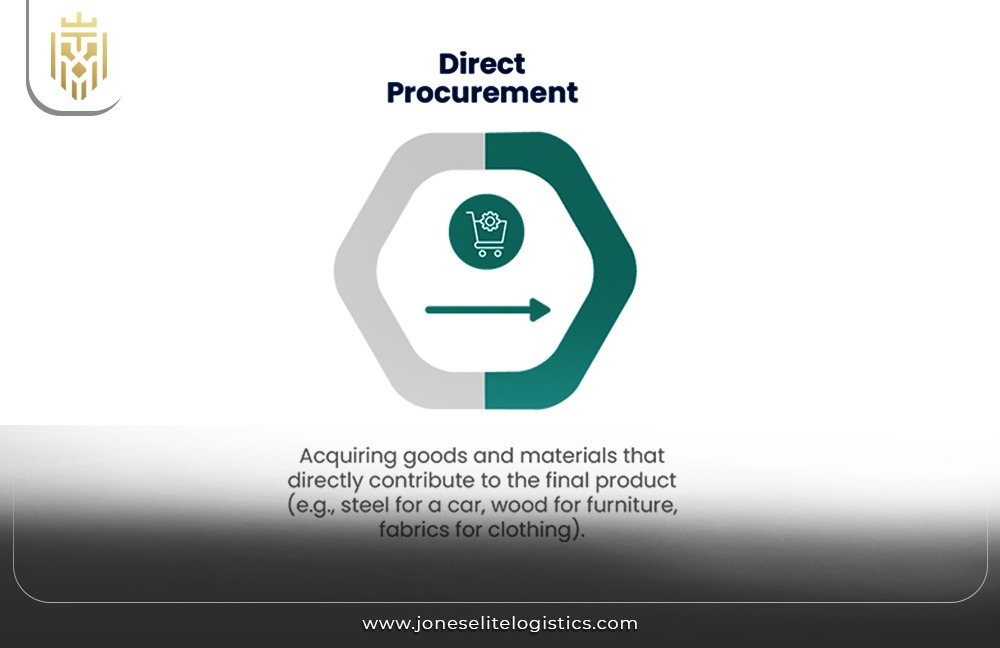Introduction of Supply Chain Management:
Supply Chain Management (SCM) thus refers to the management of tangible goods and services from the point of production, through distribution to the customer. Sourcing involves all the processes in sourcing raw materials until the final product is delivered to the customer at the lowest cost and time possible. SCM is a strategic sourcing operation that combines logistics, production, and inventory management to harmonize operations and build a competitive edge.

Steps of Supply Chain Management:
Supply Chain Management involves five operational steps: planning, sourcing, manufacturing, delivering, and returns. Every step is geared toward particular activities and objectives, including demand forecasting and supplier management, production of goods, delivery to the customer, and managing returns.
Plan Stage:
The Plan Phase includes setting procurement strategies for supply chain to manage supply and demand, forecasting requirements, and mapping actions for production, procurement activities, and transportation. Organizations coordinate supply chain activities to achieve strategic business goals and ensure resource availability.
Source Stage:
The Source Stage is aimed at the acquisition of materials, parts, and services that are to be used in the production process. It entails strategic sourcing, supplier identification, evaluation, and relationship management. Key tasks include assessing supplier performance and enhancing the procurement function.
Make Stage:
The Make Stage includes all the actions or procedures that are involved in the production of the flat package. This involves planning on when to produce batches, supervising on the resources in use, and the quality of the products. It tries to accomplish the optimal conversion of materials into products with the desired quality at the least possible cost.
Deliver Stage:
The Deliver Stage involves handing over complete products to clients. Factors include order management, storage, distribution, and strategic sourcing activities like carrier management and route determination.
Return:
The Return stage addresses the handling of products returned to the supplier or manufacturer by consumers. It strategically incorporates areas like returns, repairs, recycling, and disposal. This stage supports both the procurement function and logistics process that will make certain that products returned are done so in the right manner and at the least cost possible. This approach can align with procurement leaders aiming to refine the process and reduce associated costs, which can further impact the company’s overall procurement strategy framework.

What is Procurement?
Purchasing is the buying of goods, services, and works from other sources outside the organizational entity or business. Some of the buying activities include needs assessment, supplier evaluation, completion of purchase orders, and negotiations. According to the mentioned definition, the objective of procurement is to purchase goods and services of acceptable quality for a lower price and within the expected time to meet organizational needs.
Importance of Procurement Process:
Procurement is a critical element for obtaining the required products and services satisfactorily, competitively, and within the specifications. Effective procurement reduces costs, minimizes risks, and encourages positive supplier relationships. It influences a firm’s competitiveness and profitability through strategic sourcing of materials.
Types Of Procurement:
Procurement can be classified into direct, indirect, services, and goods procurement. Each type addresses unique organizational needs with varying procurement strategies and procedures. Direct procurement involves materials for the production line, while indirect procurement supports overall operations.
Direct Procurement:
Direct materials involve the purchases of raw materials, components, and products that are used directly in production. Effective procurement determines supply reliability, quality, and cost, impacting the company’s profitability and competitiveness in the global sourcing market.

Indirect Procurement:
Indirect procurement entails buying items that are used in everyday activities but are not end products in the production line. The mundane ones include stationery items, cleaning services, and computer services among others. Indirect procurement, though not directly related to production, is crucial in the management of organizational business processes and employee productivity.

Services Procurement:
Services procurement focuses on acquiring non-physical items like advisory, maintenance, and consultancy services. This process ensures organizations receive necessary expertise to run operations efficiently, aligning with procurement strategy frameworks.

Goods Procurement:
Goods procurement focuses on acquiring essential items for business operations beyond production materials, like office equipment and consumables. Goods ordering ensures that required items are available at the right time, meeting quality standards and keeping costs low. The procurement function in this context ensures the strategic alignment of goods procurement to support business operations effectively and cost-efficiently.
Steps of Procurement Process:
The procurement process involves several key steps: It includes activities such as identifying needs, recommending suppliers, submitting orders, evaluating sellers, negotiating prices, receiving and examining products, and record keeping. Every stage helps to guarantee that the organization obtains the right quantity and quality of the products and services for a reasonable price.

Identification and Supplier Selection:
Identification and supplier selection can be defined as the process of understanding that specific goods or services are required and finding proper suppliers. Market research, supplier comparison, and vendor assessment that involve quality, reliability, and cost of the vendors are also included in this step.
 Request Submission:
Request Submission:
Purchase requisitioning involves formally requesting needed goods or services. This step entails identifying a need, gaining approval, and submitting requisitions to ensure smooth procurement operations.
Vendor Assessment:
Vendor evaluation entails appraising the performance of potential suppliers about the needs of an organization. This entails assessing their financial performance, history, product quality, and accreditation to industry standards and the law. Vendor evaluation reduces the risk in the supply chain and guarantees strong supplier relationships.
Negotiation:
Negotiation is a critical part of procurement operations, determining terms and conditions of sale with specific suppliers so that both parties benefit. This stage aligns with broader procurement goals like securing competitive pricing, ensuring strong supplier relationships, and reinforcing a resilient supply chain. Effective procurement strategies here address factors like price, delivery timelines, contract management, and payment methods. Negotiation fosters favorable outcomes and supports a cost-effective purchasing strategy essential to achieving procurement policy objectives.

Receipt and Inspection of Delivered Goods:
Before goods are formally received by the organization, the procurement team performs quality and conformity checks to ensure alignment with order specifications. This procurement practice upholds supply chain resilience by identifying and managing discrepancies quickly to prevent disruptions in supply chain operations. The quality inspection process is essential for both maintaining strong supplier relationships and supporting a resilient supply chain, as it helps to identify any abnormalities early in the supply chain process.
Maintain Invoice and Recordkeeping:
Maintaining detailed records of procurement operations includes tracking all transactions such as purchase orders, receipts, and invoices. Good recordkeeping is essential for procurement decisions and facilitates transparency in contract management and purchasing process evaluations. Procurement software can streamline these records, allowing easy access to past transactions and supporting effective procurement through improved auditing and compliance. Comprehensive documentation in procurement practice ensures clarity in spending, bolsters supply chain resilience, and strengthens supply chain process efficiency.
Role of Procurement in Supply Chain:
Purchasing is a significant link in a supply chain that is accountable for the acquisition of resources for the manufacturing and operational processes. This means timely supply of inputs, maintaining the quality of inputs, and managing relations with the suppliers. An efficient procurement system leads to a reduction of costs, managing risks, maintains supply chain integrity, and manages supplier relationships.

Difference Between Procurement and Supply Chain:
Procurement deals with the sourcing of products and services needed for an organization, which includes supplier identification, sourcing, and buying. Supply chain management or SCM is a more general term, which captures every step of the process, starting with purchasing the raw materials and ending with the delivery of finished products. SCM interlinks the four main processes, which include procurement, production, logistics, and distribution
Emerging Trends in Supply Chain and Procurement:
Current trends in supply chain and procurement can be categorized into the following: digital through AI and blockchain, sustainability, and focus on risk. Measures such as IoT and machine learning improve visibility and adoption, while sustainability measures respond to ecological and ethical challenges. Also, organizations are focusing on the aspect of continuity in case of an occurrence of disruptors to continue with the supply chain.
FAQ
1) What is the role of procurement in the supply chain?
Procurement is responsible for acquiring the required raw materials and resources for production, managing quality, quantity, and costs. It coordinates supplier relationships, negotiates contracts, and minimizes risks, influencing supply chain effectiveness.
2) What is the procurement process?
The procurement cycle includes identifying needs, sourcing suppliers, issuing requests, vendor evaluation, negotiating terms, receiving goods, and record-keeping. Each step promotes effective procurement of goods and services to meet operational goals.
3) What are the types of procurement?
Types of procurement include direct, indirect, service, and goods procurement. Direct procurement includes materials used in manufacturing, while indirect procurement supports operations; services procurement involves acquiring professional services, and goods procurement focuses on acquiring necessary items for business operations.
4) What is the Importance of procurement?
Procurement is vital for securing quality goods and services within acceptable costs and ensuring timely delivery. It involves cost control, risk management, and strategic sourcing, affecting a business’s competitiveness and profitability.
5) What are Difference between supply chain and procurement?
Purchasing is the process of obtaining such commodities through supplier identification, contracting, and buying. Supply chain management (SCM) encompasses all activities, connecting procurement, production, logistics, and delivery processes in an integrated system for improved efficiency.







